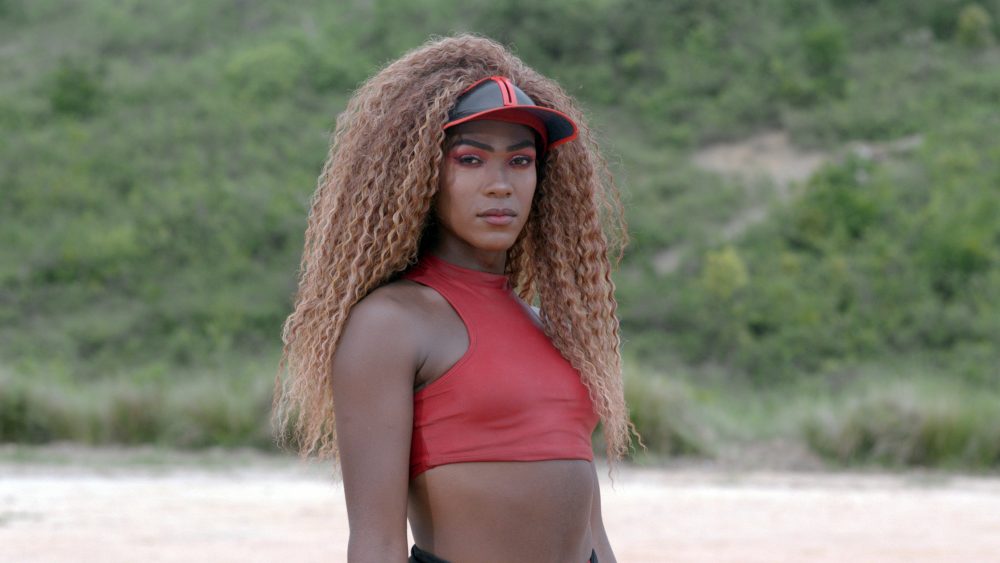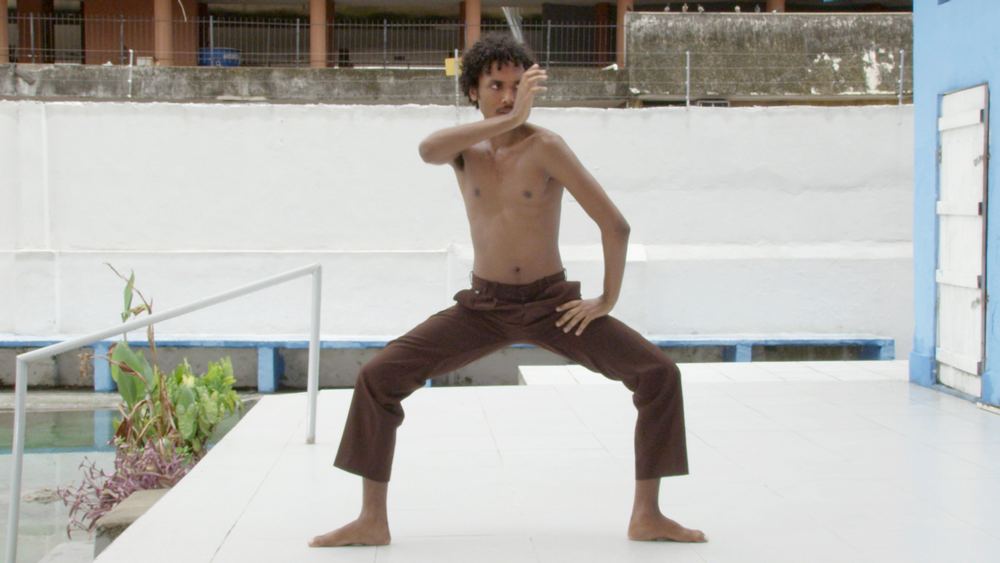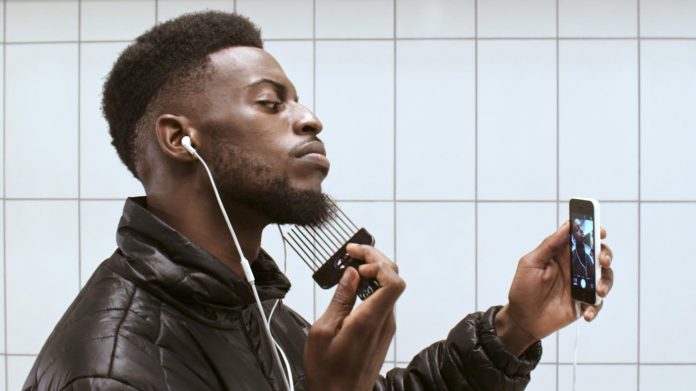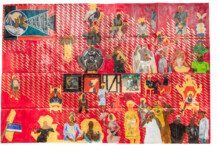From the first work done together and the present day it has been only six years. In this prolific period, Barbara Wagner, 38, and Benjamin de Burca, 43, held about ten large projects – among photographic series, video installations and short films – and with them they were present in a series of biennials, exhibitions and festivals around the world. They toured the universes of art and cinema and, in 2019, were awarded at the Berlin Festival with the short film RISE (2018). Now, they prepare to represent Brazil in the 58th Venice Biennale, with the unreleased Swinguerra, that has just been shot in Recife.
In a productive sequence almost without breaths from 2013, the duo developed a coherent and solid line of research both in the themes treated and in the creation of an aesthetic and a language — even with the nuances and peculiarities of each project. But, according to them, rarely stopped to analyze this body of work. “I started thinking about it just recently. Until recently we could not see a body, because we produce a lot in a short time. Now that we build up some works we can look back and understand more clearly the relations between them, “says Wagner, who, next to Burca, talked for more than one hour with Arte!Brasileiros.
Especially in projects involving films, that now arrives at seven, the duo presents audiovisual works conceived in conjunction with its protagonists, which blend documentary and fiction, reality and imagination, and that raise debates such as the use of the body, the industry music, dialogs and conflicts between pop culture and traditional manifestations and on the ideas of good and bad taste. Issues treated in a multidisciplinary way in works that depict characters from marginalized universes and the way they presented themselves to the world – from tacky/brega musicians and dancers of frevo in Recife to rappers from Toronto; from schlager singers of Münster to Evangelical speakers of the Zona da Mata in Pernambuco, Brazil.

Still de “Swinguerra” (2019)
“On the one hand, are manifestations that seem marginal, but in real life they are very central in the culture. Schlager is the musical genre more consumed in Germany, hip hop is a worldwide phenomenon and brega is very popular here in the Northeast of Brazil , “says De Burca. “ I think we seek to understand these phenomena that seem marginalized, but actually have a central nerve in our culture experience “, complete Wagner. “ They drink all the time from this central cultural production, and at the same time they don’t need it, they are not dependent on the mainstream and on the conventional media. Those are groups who find wayouts for their own existence inside that universe of trading between centre and outskirts. “
In this sense, Wagner and de Burca are questioning the notion, popular in sectors of political activism and in areas of the social sciences, of “give voice” to minorities and marginalized. To the duo, these groups have their own voice, “they know very well how to perform”, and so the work deals with much more to hear those voices or create together other possible voices. “So we always question what could be our contribution. What we register in audiovisual has to go to another place, a place that comes from the encounter, from the dialogue between our wishes to observe, to understand and to question together with their artistic will. The will of people with whom we collaborate, “says Wagner.
The resulting, therefore, comes from something that is shared when in elaboration and that reaches at end something new. Somehow refers to the ethnofiction movies of Jean Rouch, who created narratives with the protagonists, a shared anthropology as Rouch called it, but at the same time the duo’s work transpires less improvisation than the work of the French. To the duo, the work begins in the planning and in the screenplay, follows in the filming, and still later, in the film’s entire career. “We keep in touch with everyone we worked from the first movie ever, and they always know where the movies are circulating”.

FROM EUROPE TO BRAZIL
Wagner and de Burca were already working on their own when they met in Europe at the end of 2009, when Wagner completed her masters in Visual Arts in the Netherlands. Born in Brasilia and graduated in journalism in Recife, she was deepening a mainly photographic research, already centered in questions of the body and in the fields of pop culture and tradition. Benjamin, born in Munich (Germany), with graduation and postgraduate in Arts completed in Glasgow (Scotland) and Belfast (Northern Ireland), had a work mainly focused on collages, photographs and painting. The first work done in partnership began to take shape when the two moved to the capital of Pernambuco at the end of 2012, in “a very interesting period to observe what was the representation of a new middle class in Brazil “. Edifício Recife (2013), a photographic series accompanied by small interviews, analyzes “the relationship between the sculptures of noble buildings in Recife and the porters of these buildings.” Although not focused on musical or body issues, the work already presented several of the themes developed later by the pair, such as the contrast between social classes and the use of urban space.
In the same year appeared the first audiovisual work, Cinéma Casino (2013), an investigation into the musical genre maloya among new generations in Reunion Island. Commissioned for the 4th Biennial of the Indian Ocean, the work was filmed in the french overseas department, located next to Africa, and puts into perspective sonorities and local dances – both traditional areas related to creole culture and anticolonial resistance as contemporary manifestations aligned to the consumer industry. “We were interested in understanding how the bodies of these young people, many influenced by pop culture, transit between tradition and the contemporary, “says the artist.
Was this same line of research, transported to another territory and context, that resulted in the short Faz que Vai (2015), work done in Recife after the production of two other projects: Desenho Canteiro (2014), a video-collage on the real estate market; and Como se Fosse Verdade (2015), a hybrid of photographic series and installation held at the bus terminal of Cidade Tiradentes, in São Paulo. Faz que vai, filmed with four frevo dancers, also raises questions of gender, that run through other works of the artists.
“In the case of movies we understood that music is the element that constitutes a kind of basis for practices that we research. Be it dance, videoclips, the song. It is the performance generally linked to the music industries that are on the boundary between the tradition and pop, “says Wagner. “ They are young people who have for the first time the possibility of working with art, and the body is a central element in that. It is the working tool in this culture of the spectacle “

DEMOCRATIZATION AND THE WORLD OF ART
Invited to 32nd Bienal de São Paulo, curated by Jochen Volz, the duo produced Estás Vendo Coisas (2016) in Recife, moving from the universe of frevo to that of young, brega singers in nightclubs and in the recording of video clips. Considering that 900 thousand people passed through the Biennial, it was there that the moment of greater visibility for the work of the artists was given. Barbara confesses: “It was very exciting to see how people relate to work. People with different ages and directories, with different understandings of what is an artistic work. “
According to her, it was an interesting moment also to see how the work had repercussions in the world of art, with educators, with the commercial circuit, with independent curators or with the direction of institutions. “ We are always testing, because each instance of these has its specificities. And for having this hybrid work, it is very good to be able to show RISE, for instance, both in a private gallery in São Paulo (Fortes D’Aloia & Gabriel) and at the Berlin festival. It is interesting to test the crosses of these spheres, the points of intersection”. The short film made in the year after the biennial, Bye Bye Deutschland! (2017), held for the Skulptur Projekte festival, in Münster, accompanies a couple of schlager singers, popular musical genres in Germany and in northern European countries, marked by sentimental lyrics and melodies. “And it also had a lot to do with this issue of good taste and bad taste. Contemporary German artists twist their noses at the schlager so, to talk about this genre was a surprise, even to Skulptur Projekte. But for us, it was the only possible way. A job in Münster had to be about this, “explains Wagner.
This surprise of which the artist speaks also raises a strangeness when one thinks of the great recognition that the pair reached in means where the musical genres of which they treat are normally considered bad. “The circuits of art and cinema are very elitists. But what I feel is that somehow our work communicates something, even beyond our intention, that interests people. But it is difficult to explain, we ourselves are always trying to understand “. The most controversial reaction came with the short Terremoto Santo, 2017 – year in that Wagner was the winner of the PIPA Prize – which presents the evangelical universe of Zona da Mata in Pernambuco from a record label of gospel music in the city of Palmares. In creating in the film an atmosphere that is both real and fanciful, where in a moment the camera shakes simulating an earthquake – in dialogue with the music being sung -, the autors disturbed part of the artistic community.”Even today, the reception is divided. There are people who think the film is a conservative propaganda of evangelicals, others think we might even mock them,” she comments. The curious, according to De Burca, is that the passages that sounds most fictionals in the movies are always conceived in the processes of creation with the characters themselves, from things that actual exists in their lives

“On artistic practice of these groups, are singers, dancers, music producers of the tacky, schlager, the gospel or swingueira, this fantasy is very present. There are no limits between fiction and reality. To get in and get out of the show is a practice that they handle very well, and the boundary between one thing and another is very fluid”, tells Barbara. “ I think cinema allows the management between these narratives and, for us, blurring these boundaries is important even to suspend judgment about what you see “. To make the camera shake in the time of “earthquake”, it would be like “shake” any kind of easy reading about the work of the duo. “We don’t have any shame in pushing to the latest consequences this idea that a film can speak of reality, but at the same time being completely fanciful. We want to create cracks “.
RISE (2018), the short that won the Audi Short Film Award at Berlinale this year, follows on this idea. Shot in a newly opened subway station on the outskirts of Toronto, the work was conducted with members of the Group Reaching Intelligent Souls Everywhere, which gathers young rappers, poets and singers of African descent in the city. The short, which was commissioned by the AGYU (Art Gallery of York University) calls the attention, maybe even more accentuated than other films, to the technical and aesthetic care that runs through the artists production-that always works with the director of photography Pedro Sotero (partner of Kleber Mendonça). Barbara commented: “I think if it wasn’t for that accuracy of cinema, with high quality sound and picture, we would lose all our effort in promoting an empathic relationship with the contents of the work”

Swinguerra, which is in post-production, is the work that will represent Brazil at 58th Venice Biennale, commissioned for this purpose from the choice of Gabriel Pérez-Barreiro. The new film features three groups: those of swingueira, that get together in courts of city’s public schools and prepare choreographies to socialize and compete with each other; the brega funk dancers, that derive from the swingueira, but work commercially in stages of nightclubs and concerts of MC’s; and the so-called passinho do maloka, teens who create dances and choreography for fun and to spread on Instagram: “From the Court, to the stage, to the instagram. On film we crossed these expressions, their codes, bodies and gestures”.
In a multidisciplinary practice, mixing cinema, visual arts, performance, music, dance and anthropology, in which to do is shared and where matters of gender, race, class and cultural industry arises, Barbara Wagner and Benjamin de Burca are aware of political responsibility of their work, especially in the current razilian context. “This place where rather than ‘ give voice ‘ you attempt to hear or talk together, is possibly a place of resistance. Because it shows how these groups that we find, these artists, create their own way out to resist in the world. And working with them is, therefore, to participate in the construction of these forms of resistance “

VENICE BIENNALE HAS AS ITS THEME THE CURRENT”INTERESTING TIMES”.
Curated by Ralph Rugoff – american, director of London’s Hayward Gallery and curator of the Biennale of Lyon of 2015-, the Venice Biennale carries out its 58th edition between 11 May and 24 November 2019, under the broad theme “May You Live in Interesting Times”. The event will bring together representations of 90 countries (with their own curatorship), plus a large overall exhibition and parallel shows in the city.
Despite the apparent optimism, the title of the edition refers to an ancient Chinese curse that wishes times of uncertainty and turmoil. In this way, second Rugoff , this edition intends to include varied themes connected to the moment of global crisis, precariousness and distrust. Will not fail, however, to talk about possible alternatives, encounters, of pleasure and of “creative learning that art makes possible.”
Brazil, which has no artist present in the overall exhibition, shows in its national pavilion the work of Barbara Wagner and Benjamin de Burca under Gabriel Pérez-Barreiro curatorship.








